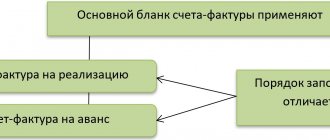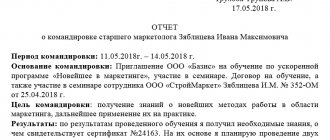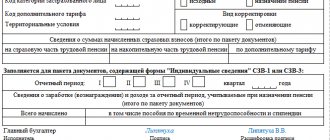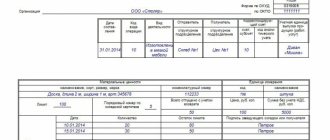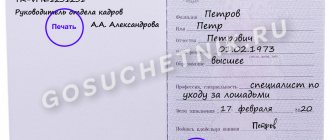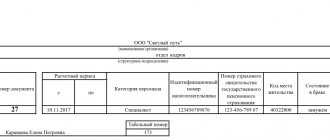What is a personal card used for?
The applicant was interviewed, hired, an acceptance order was issued, and now he needs to go through the employment procedure.
To do this, he needs to submit a set package of documents containing a lot of heterogeneous information. To systematize this information for further accounting, the data is recorded on specially designed cards. Thus, information about all employees of the enterprise forms a file cabinet convenient for complete accounting.
The State Statistics Committee of the Russian Federation developed and approved in Resolution No. 1 of January 5, 2004 “On approval of unified forms of primary accounting documentation for recording labor and its payment” a form for filling out a personal card, called T-2.
On such a form it is convenient to reflect all significant information about the employee. If the enterprise considers it necessary, it can develop its own personnel data register on its basis.
Attention! An employee personal card is used for employees holding any position, both full-time and part-time. It is convenient to arrange personal cards in alphabetical order or distribute them by structural divisions.
What documents are required to fill out a T-2 card?
The card is created almost as a last resort, when the order from the employer and the employment contract are already ready. The law does not indicate that filling out a T-2 employee’s personal card should occur immediately at the time of hiring, however, according to the experience of various organizations, this option is the most effective: after a while it is quite difficult to find a moment to calmly fill out the document.
In order for the T-2 personal card to be issued correctly, it is necessary to ask the new employee for all the documents that can confirm his words.
Maintaining documentation about employees is an important section of the work of the HR department of any organization, on which personnel records completely depend. Individual entrepreneurs may not officially keep such a file, but we recommend that they also think about this convenient method of accounting. This will make it possible to keep all the necessary information about employees in one place, as well as easily report to regulatory authorities.
A sample of filling out an employee’s personal card in form T-2 can be viewed at the link.
t-2-empty-1-1
Is it acceptable to maintain a personal card in electronic form?
Most document flow today is transferred from paper to electronic form, this reduces the likelihood of errors, relieves the workers responsible for this and reduces the number of errors. But not all documents can move from paper to exclusively digital form.
A personal card, in addition to entering into it certain data that allows existence in digitized form, provides for a mandatory visa for the employee in cases of making changes to the work book or issuing orders regarding:
- bonuses;
- disciplinary action;
- going on vacation;
- internal translation;
- dismissals.
Any new entry in the work record or order issued regarding the employee must be reflected in the personal card. The employee must be familiarized with the changes made, which is confirmed by his signature.
It should be located:
- on page 2 of form T-2 - evidence of the correctness of the recorded information;
- on page 3 – confirmation of employment and transfers (if any);
- on page 4 – recording information about dismissal.
Attention! You cannot maintain personal cards exclusively via computer. However, for ease of use, you can duplicate a certain amount of data from the T-2 form, which does not require personal approval.
Valentina Mitrofanova: what happens if the employer does not keep personal cards
Building an effective HR service 2.0
12485
The latest HR course 2.0
12805
Cancellation of work books, new reporting to the Pension Fund from 2020
8749
Why do you need a personal card?
1. Storage and systematization of information. A personal card is a kind of employee dossier. In a condensed form, the card contains all the information about him: passport data, registration address, specialty, diploma number, level of foreign language proficiency, family information, etc. An employee of the HR department has the right to use a personal card in their work. For example, a personnel officer can create any benefits for an employee based on the family composition indicated on the card. An accountant can also use it - T-2 may contain information that is the basis for any additional payments. Separate records of a specialist’s qualifications can help him take a higher position or expand his functionality.
2. Document important changes. Date of entry to work, order number, transfer from one job to another, promotion, awards and incentives - all this is important information about the employee. Of course, they are accompanied by timely orders, schedules, acts and other things - however, the entire amount of knowledge about these changes is contained in the personal card - they can be seen chronologically. Storing data on a single T-2 form will help avoid misunderstandings or conflict situations. A large amount of information can be restored in case of loss. The employee signs on a personal card about all changes occurring in his career, certifying with his signature his acceptance of these changes and agreement with them.
3. Military registration. The employer is required to keep records of employees (this is specified in the Federal Law “On Military Duty and Military Service”). The accounting itself is carried out using personal cards, in which the corresponding section is filled out. Also, the employer, having filled out a personal card, must explain to employees liable for military service the procedure for fulfilling their military duty.
4. Statistics and food for thought. In general, information from T-2 can serve as a kind of database about the organization’s human resources. After analyzing this data, the enterprise administration can draw conclusions about the qualifications of its specialists, their successes and career paths, and use this knowledge for the development of the company.
What types of cards are there?
There are two official forms of cards - the usual T-2 and for a civil servant T-2GS (MS). The forms differ only in that for a civil servant, the length of service in the civil service is separately indicated, which gives the right to bonuses for length of service and to additional payments to the pension.
Based on what documents is a personal card filled out?
The starting documents for filling out this register are the documents from the package submitted upon employment. Some papers with the information necessary for T-2 can be prepared directly at the organization.
The employee filling out the personal card will need the following employee documents:
- the employment contract is the main document reflected in the card; it is also the basis for registration
- employee identification card (passport);
- SNILS;
- TIN – not required to be presented when applying for a job (if this is the first job, the TIN will be issued by the employer);
- certificate of education (diploma, certificate);
- military ID;
- a questionnaire containing data on marital status, if the employee filled it out during registration (if there is no questionnaire, copies of a marriage certificate, birth certificate, etc.);
- work book when applying for the main place of work;
- certificate of length of service from the main place of work - for part-time employment.
For your information! If additional information is needed, it can be entered into the personal card according to the employee.
How to fill out an employee’s personal card on form T-2 in 2020
Legal entities, regardless of their form of ownership, must use the unified form T-2. If it is necessary to make any changes related to the inclusion of additional lines, details, etc., the employer must confirm this with an order. It is prohibited to remove details from the form.
The initial filling out of the personal card is carried out on the basis of the documents submitted by the employee when drawing up the employment contract, as well as the employment order.
The legislation sets the deadline for filling out a work book after being hired - 7 days, but does not define it for a personal card. However, personnel officers tend to adhere to a similar deadline and entries in the work book and T-2 form are filled out in parallel.
The step-by-step filling out of a personal card can be described in the following order:
Document header:
The name of the organization is written down in strict accordance with the constituent documents and a table is filled out indicating:
- date of document preparation;
- timesheet number assigned to the employee upon employment with the company;
- payer's TIN and SNILS;
- in the “Alphabet” column the first letter of the employee’s last name is indicated;
- when filling out the “Nature of work” column, the attribute “permanently” or “temporarily” is indicated, depending on the concluded employment contract;
- This is followed by a clarification column “Types of work” - main or part-time;
- The table is completed by indicating the gender of the employee.
Section I. General information:
Complete information about the employee is filled in:
Date and number of the employment contract on the basis of which the employee was hired.
Point 1-3.
Full name without abbreviations in the nominative case, date of birth in verbal-numeric format (the month is written as a word). Place of birth according to your passport (the online service will help you find the required OKATO code).
Point 4.
Information about citizenship, enter one of the options:
- citizen of the Russian Federation - 1;
- citizen of the Russian Federation and a foreign state - 2;
- foreign citizen - 3;
- stateless - 4.
Point 5.
If you know a foreign language, fill in the corresponding line indicating the language and the degree of its proficiency:
- I read and translate with a dictionary - 1.
- I read and can explain myself – 2;
- I speak fluently – 3.
Point 6.
Information about education, including all details in accordance with the submitted documents (name of educational institution, year of graduation, direction or specialty);
If you have a document confirming completion of postgraduate, postgraduate, or doctoral studies, fill out the corresponding table;
Point 7.
In the line “Profession”, the one that is documented is indicated as the main one. If there are several, write down the reason for which you were hired in the main one, and put the rest in the “Other” line. This may be useful when transferring to another position.
It is convenient to find the OKPDTR code here by entering only the specialty.
Point 8.
The line “Experience” indicates the number of days, months and years of total, continuous and entitlement to a bonus for length of service of working periods in accordance with the employee’s work book - the calculation can be made using an online calculator;
Point 9.
To indicate marital status, the OKIN directory is used, in which coding occurs in the following order:
- 1 - never been a member;
- 2 - is registered;
- 3 - is unregistered;
- 4 - widow (widower);
- 5 - officially divorced (divorce registered);
- 6 - broke up.
The rules for filling out the T-2 form exclude the use of the wording “married” or “single” .
Point 10.
Table on family composition, information about immediate relatives (parents, children, brothers, sisters) is entered;
Point 11-12.
Passport details, registration address and actual residence are indicated.
Section II. Military registration:
When employing a citizen subject to military registration, he is obliged to present a military ID or corresponding certificate to the personnel service. Based on these documents, the tabular part of the personal card is filled out.
At the bottom of the second sheet of the T2 form, the HR employee puts his position, personal signature and transcript. Then the document is handed over for review to the employee for whom it was drawn up, which is confirmed by his personal signature and date of review.
Section III. Job details:
During the entire period of work in the company, information about all changes will be entered here, which will also be reflected in the employee’s work book. The initial entry must contain hiring information.
Each entry must be confirmed by the signature of the employee for whom the personal card is registered.
Section IV. Certification:
A number of organizations conduct periodic certifications of employees, information about which is entered in this section.
Sections V and VI. Information about advanced training and professional retraining.
During the period of employment, the employee has the right to improve the level of his qualifications and submit supporting documents to the personnel service of the organization. Based on them, information about:
- start and end dates of training;
- type of promotion;
- the name of the institution where it was completed;
- supporting document (details).
If the initiator of advanced training or retraining was the employer, then the “Bases” column is filled in.
Section VII. Awards and promotions:
All state awards or received from the organization are entered into the employee’s work book. They are duplicated in his personal card.
Section VIII. Vacation:
All types of leaves that are provided to an employee during the period of work in the organization are recorded in the section of the T-2 form. They are entered in accordance with orders, the details of which are indicated in the “Bases” column.
On the day the vacation begins, the personnel officer fills out columns 1-5, after the end - column 6.
If vacation is replaced by monetary compensation, then:
- columns 1-3 are filled in according to the general rule;
- Column 4 indicates the number of replacement days,
- in 5 and 6, the entry “Replacement of vacation with monetary compensation” is made.
If the columns of this section are filled in completely, it is necessary to make an additional sheet with a similar table. It is pasted into the T-2 card and is a continuation of the section.
Section IX. Social benefits:
An employee may be a disabled person, a donor, a Chernobyl nuclear power plant liquidator, etc., which gives him the right to social benefits. This information should be reflected in this section.
All information about the employee that is not included in other sections can be indicated in the “Additional Information” section.
Termination of employment relations (dismissal) of an employee entails filling out Section XI.
It indicates the date of dismissal and the reason (order). This data is certified by the personnel employee and the dismissed employee.
Sample of filling out the unified form T-2
In the header of the T-2 form, you must fill in the name of the organization, OKUD, OKPO code. Next, fill out the table:
- date of drawing up the personal card;
- employee personnel number;
- employee tax identification number;
- SNILS number;
- alphabet (first letter of the employee’s last name);
- nature of the work;
- type of work;
- employee's gender.
The main part of the card consists of 11 sections. In Section I you need to fill in general information about the employee:
- employment contract (number, date);
- Full name of the employee;
- his place of birth;
- citizenship;
- knowledge of foreign language;
- employee education;
- profession;
- work experience;
- whether married;
- family composition;
- passport data;
- address of place of residence (registration and actual address of residence).

